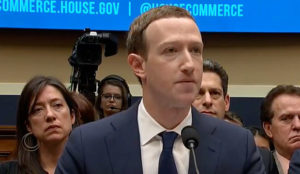Google on Wednesday said it removed 1.7 billion bad advertisements from its various sites in 2016, more than double the prior year’s totals.
Google took several steps to crack down on the deceptive advertising, including updating its policies to protect users from “misleading and predatory offers.” It also beefed up its technology to help identify misleading ads and remove them, according to Scott Spencer, Google’s director of product management, sustainable ads.
A free and open Web is a vital resource for individuals and businesses around the world, and advertising plays a role in making sure users have access to accurate, quality online information, he noted.
Bad ads can ruin that experience for customers, Spencer warned. “Ultimately bad ads pose a threat to users, Google partners and the sustainability of the open Web itself.”
Industry Crisis
Bad ads have been a big headache for Google and a host of other social media sites and search engines, because they erode the trust they have with their customers and advertisers.
“For [Google], Facebook, and a host of others, it’s an ongoing issue,” said Rick Edmonds, media business analyst at Poynter.
“Advertisers are justly upset if lots of the impressions for which they are charged are fraudulent or served to computer bots rather than potential human customers,” he told the E-Commerce Times.
Among specific changes Google instituted was a ban on advertising certain types of loan offers. Starting last July, it prohibited ads for loans that would come due within 60 days. Within the U.S., it banned ads on loan with an APR of more than 36 percent. Both restrictions were part of an overall crackdown on deceptive payday lending practices.
The company has disabled more than 5 million payday loan ads in the six months since the ban began, according to Spencer.
Google also enhanced its technology to crack down on “trick to click” ads that often appear as system warnings and deceive users into downloading malware. The company detected and disabled more than 112 million of those ads — six times more than the year before.
As part of a crackdown on advertising for illegal pharmaceuticals, Google axed 68 million healthcare ads for violations — up from 12 million a year ago. The firm also took down more than 17 million bad ads in violation of gambling laws.
Another part of the crackdown involved misleading ads — for example, miracle weight loss cures. Google took down 80 million deceptive and misleading ads of that type, according to Spencer.
Self-clicking mobile ads — that is, advertising that popped up on mobile phones and pushed users to the app store — were another focus. More than 23,000 self-clicking ads were detected and removed in 2016, a major increase from 2015, according to the company.
Fake News
Another 7 million ads that were designed to trick the company’s detection systems were taken down, Google said.
One version of this type of activity involved an increase in “tabloid cloakers,” which involved scammers that hid ads behind news links or trending stories. Google suspended the accounts of more than 1,300 of those scam artists, according to Spencer. During a single sweep in December, the company took down 22 cloakers that were responsible for ads viewed by more than 20 million people.
Google did not disclose how much revenue it may have lost as a result of the crackdown.
Its actions ultimately should benefit the company, however, by making customers feel more confident that links they might click on are legitimate, suggested Michael Jude, a program manager at Stratecast/Frost & Sullivan.
“Consumers are primed to ignore all ads once they have had a few bad experiences,” he told the E-Commerce Times. “It might actually protect revenue if Google and others can maintain a reputation for legitimate and useful advertising.”






















































Social Media
See all Social Media